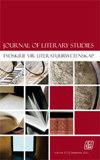浅析小说《世界末日机器》中的时间元素
IF 0.1
4区 文学
0 LITERARY THEORY & CRITICISM
引用次数: 0
摘要
时间是赋予小说文本身份并区分故事和叙事的要素之一。此外,时间在小说文本中发挥着不同的作用,并以不同的方式促进故事的发展。本文运用热内的理论对小说《与世界末日机器下棋》中的时间要素进行了研究。考虑到小说的记忆结构,时间错误在文本中出现的频率很高,日历时间没有太大的意义。作者对根据自己脑海中的形象来写故事的兴趣,消除了记录事件准确日期的需要。作者在叙事中运用了打破时间的手法,在故事中制造了悬念,解决了文本中存在的一些歧义。频繁的描述和对细节的关注使得故事的大部分场景都停止了叙述的时间。在小说中,事件的叙述频率是单一类型的,利用这种方法,作者试图帮助提高故事的节奏和进展。小说《与世界末日机器下棋》的作者运用了各种与时间相关的技巧和方法,叙述了故事主人公的视角从教条到相对宽容的转变,并运用时间技巧对叙述者的许多习得的信念产生了怀疑。本文章由计算机程序翻译,如有差异,请以英文原文为准。
An Analysis of the Element of Time in the Novel
Chess with the Doomsday Machine
Time is one of the elements that gives the fictional text its identity and distinguishes a story and a narrative. In addition, time take different functions in the fictional text and contribute to the progression of the story in various ways. The present research investigated the element of time in the novel Chess with the Doomsday Machine by the theory of Gerard Genet. Considering the memory-like structure of the novel, anachronism has highly frequency in the text and calendar time is not of much significance. The interest of the author in writing the story based on his mental images has obviated the need to record the precise dates of the events. Drawing on the technique of breaking the time in the narrative, the author has created suspense in the story and resolved some of the ambiguities existing in the text. Frequent descriptions and attention to detail have stopped the time of the narrative in most of the scenes of the story. In the novel, the narrative frequency of the events is of singular type and, drawing on such a method, the author has tried to help with the pace and advancement of the story. The author of the novel Chess with the Doomsday Machine has utilized various time-related techniques and methods to narrate the transformation of the perspective of the protagonist of the story from a dogmatic to a relatively tolerant attitude, and has wielded time techniques to cast doubt on many learned beliefs of the narrator.
求助全文
通过发布文献求助,成功后即可免费获取论文全文。
去求助
来源期刊

Journal of Literary Studies
Multiple-
CiteScore
0.50
自引率
0.00%
发文量
0
期刊介绍:
The Journal of Literary Studies publishes and globally disseminates original and cutting-edge research informed by Literary and Cultural Theory. The Journal is an independent quarterly publication owned and published by the South African Literary Society in partnership with Unisa Press and Taylor & Francis. It is housed and produced in the division Theory of Literature at the University of South Africa and is accredited and subsidised by the South African Department of Higher Education and Training. The aim of the journal is to publish articles and full-length review essays informed by Literary Theory in the General Literary Theory subject area and mostly covering Formalism, New Criticism, Semiotics, Structuralism, Marxism, Poststructuralism, Psychoanalysis, Gender studies, New Historicism, Ecocriticism, Animal Studies, Reception Theory, Comparative Literature, Narrative Theory, Drama Theory, Poetry Theory, and Biography and Autobiography.
 求助内容:
求助内容: 应助结果提醒方式:
应助结果提醒方式:


